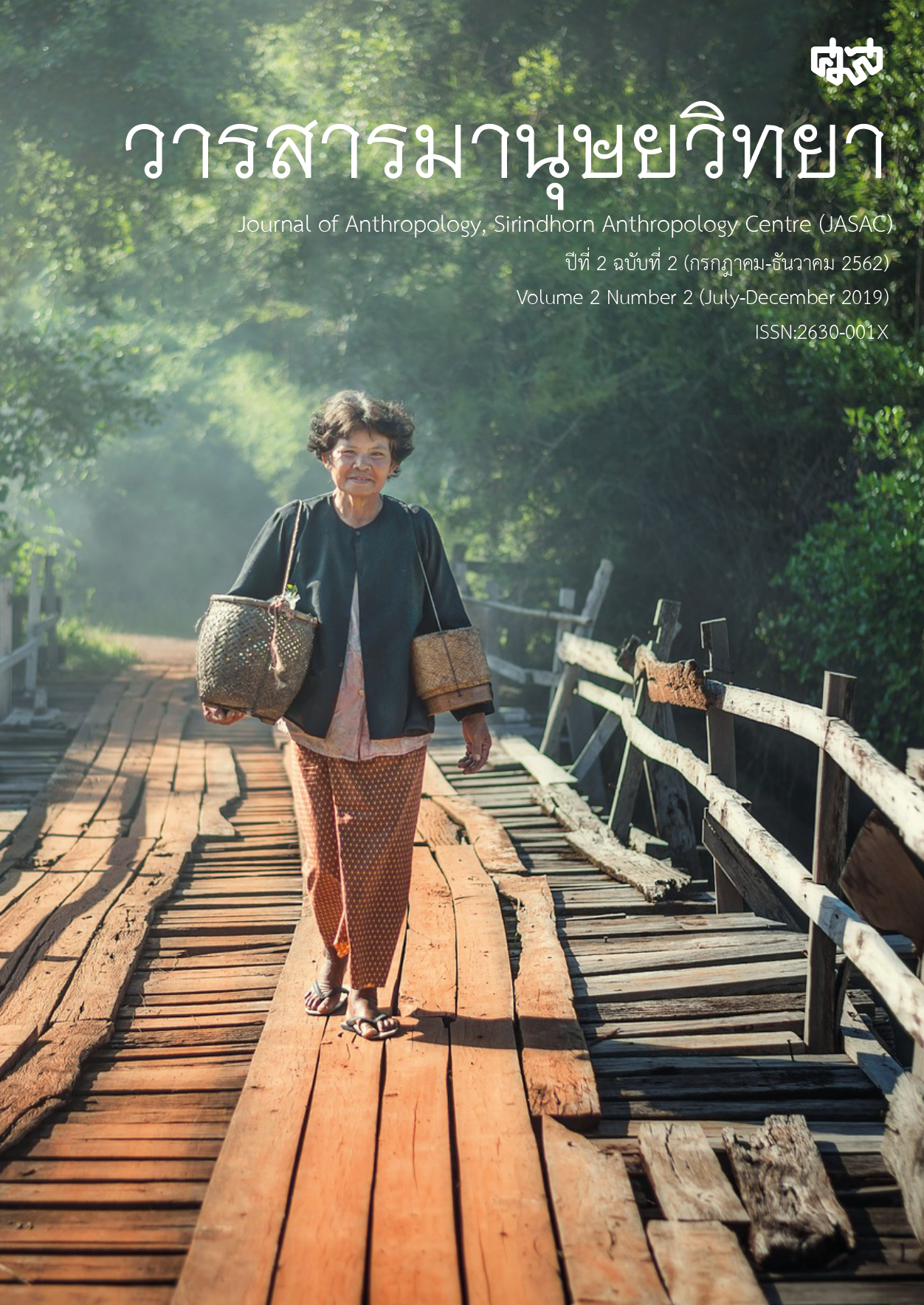สินค้านำเข้าและส่งออกในยุคก่อนประวัติศาสตร์ตอนปลาย หลักฐานโบราณคดีจากภาคกลางของประเทศไทย
Main Article Content
บทคัดย่อ
บทความนี้มีวัตถุประสงค์เพื่อสร้างองค์ความรู้เกี่ยวกับชนิดสินค้าที่เกี่ยวข้องกับการค้าและ/หรือการทางไกลในช่วงยุคก่อนประวัติศาสตร์ตอนปลายในประเทศไทย (ประมาณ 2,500-1,500 ปีมาแล้ว) โดยใช้หลักฐานทางโบราณคดีประเภทต่าง ๆ ทั้งโบราณวัตถุ (artifcts) และนิเวศวัตถุ (ecofacts) ที่พบจากการสำรวจและการขุดค้นแหล่งโบราณคดีในภาคกลางทางตะวันออกเป็นกรณีศึกษา จากการศึกษาพบว่ามีหลักฐานหลายชนิด หลายประเภทที่น่าจะเกี่ยวข้องกับการติดต่อแลกเปลี่ยน รวมทั้งการอพยพของผู้คนจากต่างถิ่นเข้ามาในพื้นที่ภาคกลางของประเทศไทยในช่วงยุคก่อนประวัติศาสตร์ตอนปลาย โดยเฉพาะอย่างยิ่งในสมัยเหล็ก ผู้เขียนพบว่าสินค้ามีแหล่งผลิตในภูมิภาคกลางและมีแหล่งผลิตในพื้นที่อื่นแต่พบในพื้นที่ภาคกลาง ส่วนวัตถุที่เป็นสินค้าแลกเปลี่ยนมีทั้งสิ่งของสำเร็จรูป (finished products) วัสดุต่างถิ่นที่ถูกนำเข้ามาในฐานะวัตถุดิบ (raw material) เพื่อผลิตเป็นสิ่งของสำหรับเป็นสินค้า พืชและสัตว์บางชนิดที่เป็นอาหาร ผู้เขียนยังพบว่าสินค้าส่วนมากที่เป็นสิ่งของแลกเปลี่ยนทางไกลเป็นเครื่องประดับ (ornaments) ประเภทต่าง ๆ เช่น ลูกปัด กำไลข้อมือ แหวน เครื่องประดับหู ทั้งนี้วัตถุประดิษฐ์ดังกล่าวอาจจะสัมพันธ์กับเครือข่ายการแลกเปลี่ยนทางไกลและนำไปสู่พัฒนาการสังคมในช่วงปลายยุคก่อนประวัติศาสตร์ตอนปลายที่เริ่มมีความซับซ้อนทางเศรษฐกิจและสังคมมากขึ้น มีการผลิตงานหัตถกรรมมากขึ้น มีเทคโนโลยีที่ก้าวหน้ามากขึ้น และมีประชากรเพิ่มขึ้นจนนำไปสู่การจัดระเบียบทางสังคมใหม่ โดยสรุป เราอาจกล่าวได้ว่าการค้าทางไกลเป็นปัจจัยสำคัญประการหนึ่งของพัฒนาการทางสังคมของมนุษย์ยุคก่อนประวัติศาสตร์ในประเทศไทย
Article Details
ลิขสิทธิ์@ของวารสารมานุษยวิทยา
ศูนย์มานุษยวิทยาสิรินธร (องค์การมหาชน), กรุงเทพฯ, ประเทศไทย
ข้อมูลเพิ่มเติม:
https://creativecommons.org/licenses/by-nc-nd/4.0/


